A concept study on the impact of hyperloop on the development perspective “Compact Metropole”
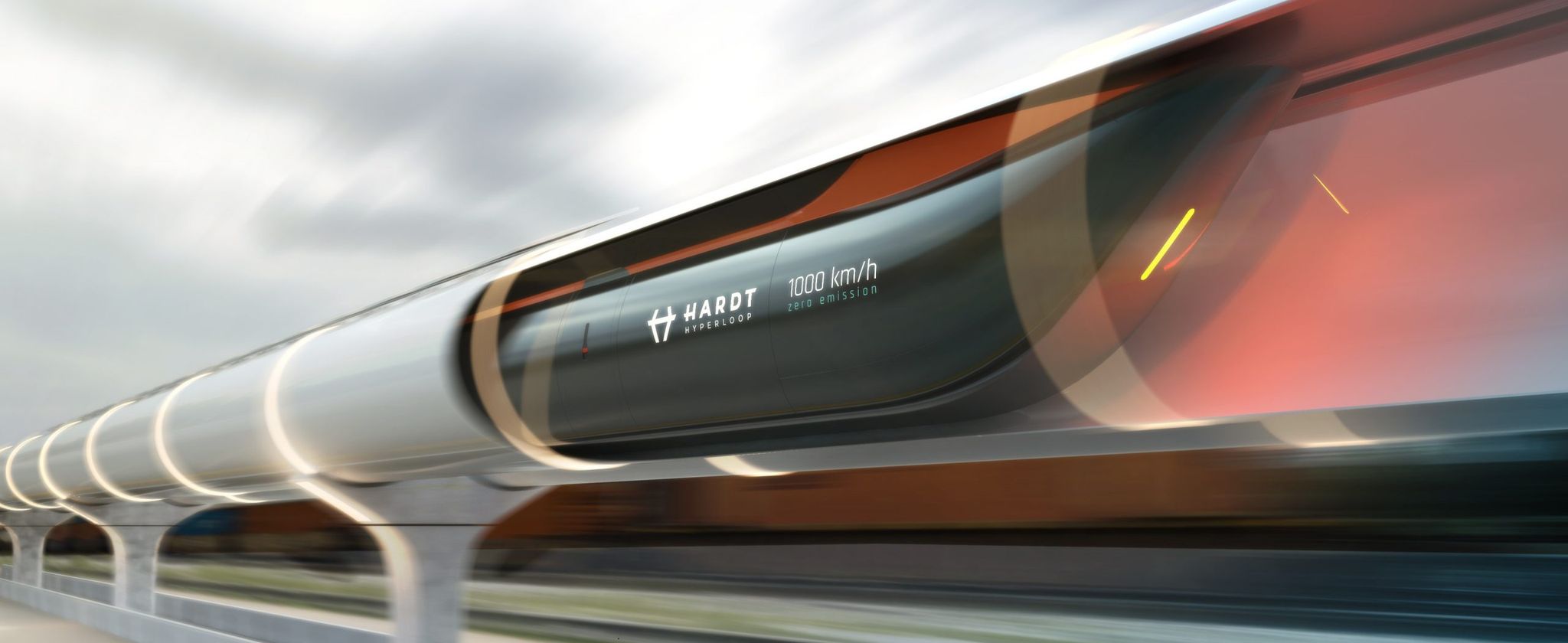
The Province of North-Holland and Hardt Hyperloop have collaborated to explore the potential impact of hyperloop transportation on the development perspective of the "Compact Metropole" region in the Netherlands. The "Compact Metropole" region includes several cities and economic centers, which can benefit from a sustainable, efficient, and fast transportation system. To investigate the feasibility of hyperloop technology in this context, the Concept Study identified five potential hyperloop routes that aim to maximize connectivity and accessibility within the region, as well as with national and international hubs.
The study revealed that hyperloop transportation can contribute significantly to achieving the key transportation objectives of the province, such as maintaining accessibility, improving transportation, increasing competitiveness, and increasing sustainability. In particular, the economic performance of hyperloop transportation in the "Compact Metropole" region is expected to be high, with benefits ranging from increased competitiveness and job creation to the reduction of negative external costs associated with road transport.
The proposed hyperloop routes serve different network scales, which can enhance the connectivity of populous cities in relatively short distances, centers with peripheral regions, and international centers. The routes can also substitute the use of aviation and high-speed rail for short-haul trips, contributing to the decongestion of airports and train stations.
The implementation of hyperloop transportation in the Province of North-Holland can be realized through a general transport infrastructure development framework, with a decision-making process being iterated after each preparatory phase. The process involves a concept study, a pre-feasibility study, a feasibility study, design, engineering, and construction, with the project expected to become operational in 2029.
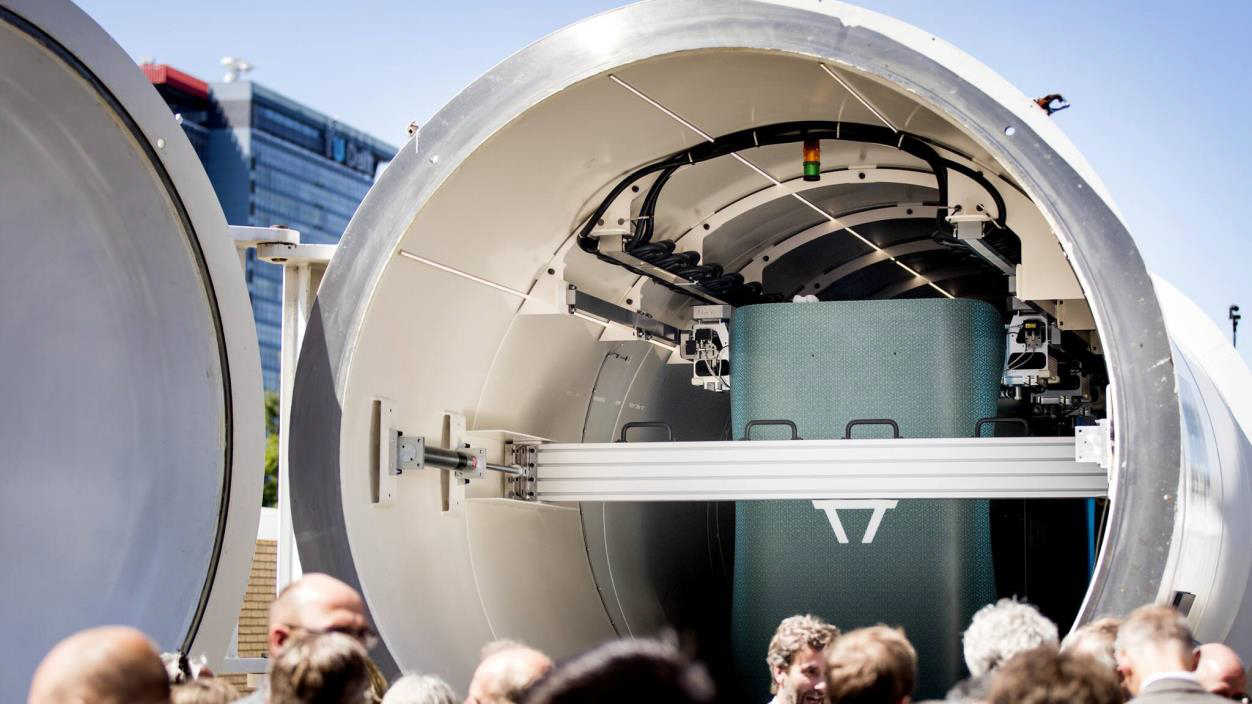
Identified Routes
The Compact Metropole development perspective in the Netherlands has identified five potential hyperloop routes that focus on maximizing connectivity of the metropolitan area with national and international economic powerhouses. These routes serve different network scales, connecting populous cities in relatively small distances, centers with peripheral regions, and international centers.
The proposed routes for the assessment of hyperloop potential are categorized into four scales: regional, national, international, and continental. The regional scale is defined as a connection between cities within a range of approximately 50 km, which is the potential for route 1 and 5 (see figure below). On the national and international scale, the longer routes are relevant, such as route 2, route 3, and route 4.
The origin station for the study is situated at Amsterdam South, and direct connections to each of the cities along a route from and to the Metropolitan Region of Amsterdam are possible due to Hardt’s Hyperloop lane switch technology. The technology allows the hyperloop system to act as a public transportation system and as a fast international transportation system, serving as an alternative to short-haul flights and high-speed rail.
Examine the figure below to view the proposed hyperloop network and its selected routes. On the right, a comparison chart demonstrates the travel times for various transportation methods, such as hyperloop, automobiles, aviation, and railways. In most cases, the hyperloop proves to be the fastest mode of transportation, as can be seen.
# | Route | Description |
1 | Amsterdam – Leiden – Den Haag | A national route between the administrative capital The Hague and Amsterdam. |
2 | Amsterdam – Rotterdam – Brussels – Paris | The route follows the HSL-Zuid rail connection, and serves as public transportation system and as alternative for short-haul flight. |
3 | Amsterdam – Utrecht – Eindhoven – Düsseldorf – Frankfurt | The route that connects the mainport of Schiphol with the Brainport of Eindhoven towards Dusseldorf and Frankfurt. |
4 | Amsterdam – Amersfoort – Arnhem – Duisberg – Düsseldorf | The route follows the International rail connection to Ruhrarea, in which hyperloop acts as public transportation system. |
5 | Amsterdam – Almere – Lelystad – Zwolle – Groningen | Connecting Groningen in the North of the Netherlands with the MRA (part of the proposed Zuiderzeelijn). |
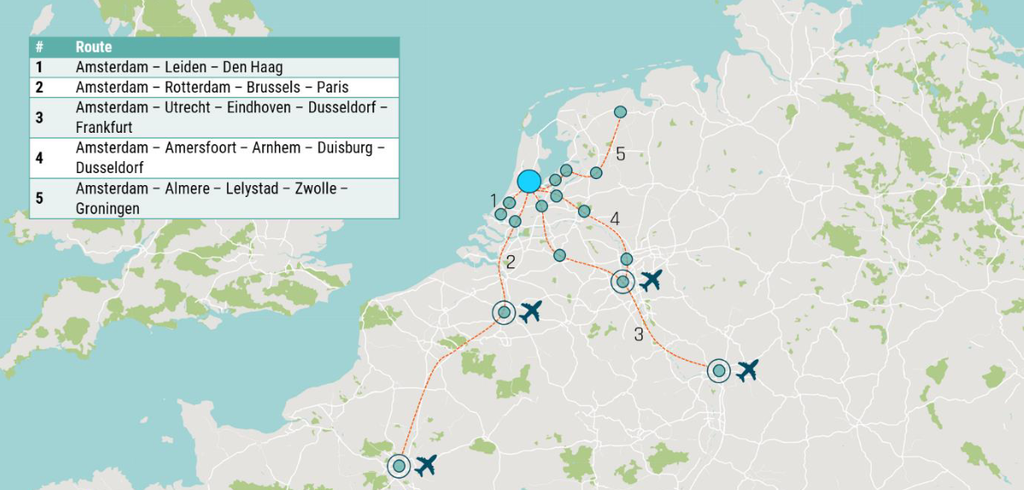
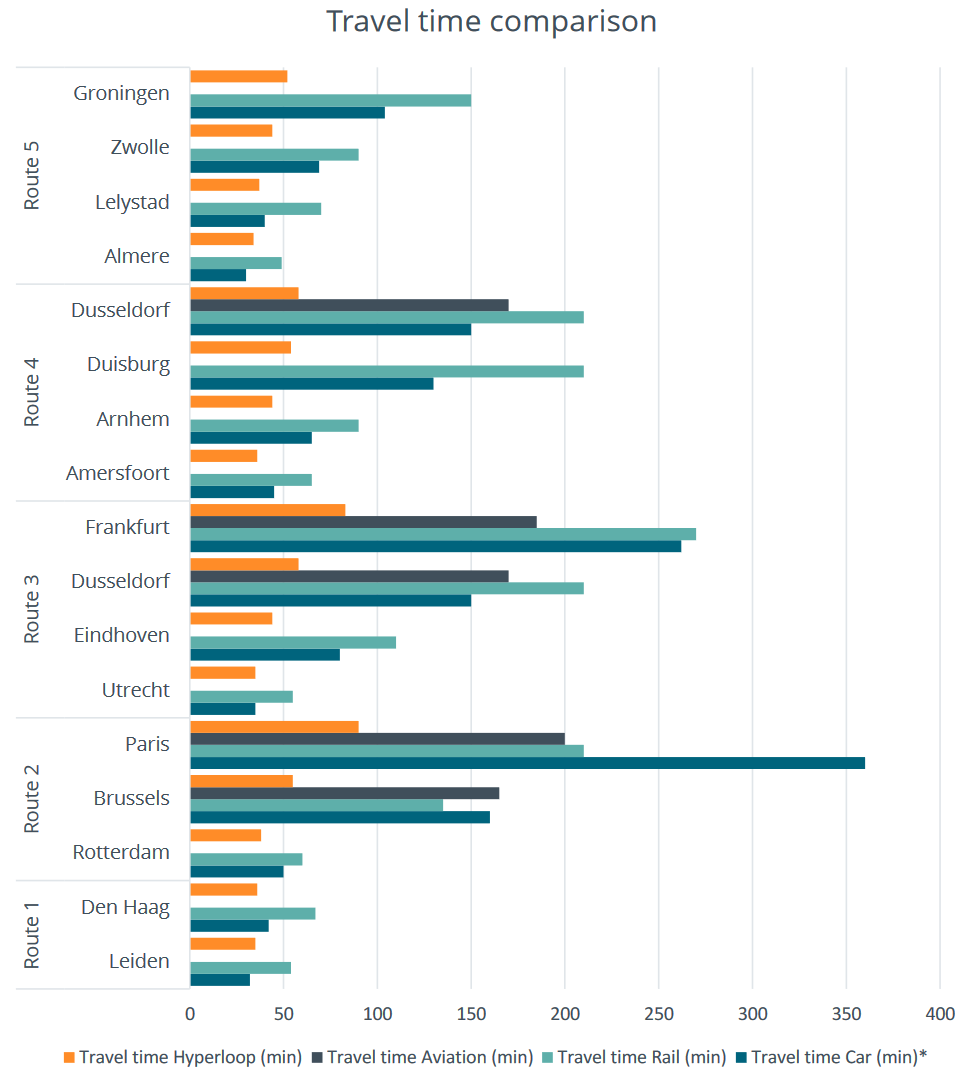
Impact
In the study, the first step was to identify key objectives during a workshop session with the Province of North-Holland. These objectives covered various goals, such as maintaining accessibility, improving urban transportation, increasing competitiveness, sustaining connectivity to Amsterdam Airport Schiphol, promoting sustainable transport, enhancing spatial sustainability, and improving overall quality of life.
The potential consequences of the proposed intervention – the implementation of the Hardt Hyperloop – were explored by organizing and categorizing the objectives. Four themes, namely Accessibility, Connectivity, Substitution, and Decongestion, served as the groundwork for the analysis and measurement of these objectives.
The following section reveals the impact of the hyperloop on each theme:
Accessibility
- Overall Travel Time Reduction: The Hardt Hyperloop's average speeds of 500 km/h dramatically reduce overall door-to-door travel time across the five routes of the compact metropolis.
- Comparison with Traditional Modes of Transport: Hyperloop provides up to 75% travel time reduction compared to rail and up to 66% reduction compared to aviation on international connections like Amsterdam-Paris, Amsterdam-Dusseldorf, and Amsterdam-Frankfurt.
- National Impact: On a national level, the hyperloop system offers significant absolute travel time reduction (in minutes). Routes like Amsterdam-Groningen and Amsterdam-Den Haag save 66% and 46% respectively compared to rail transport.
- Intra-city Travel Promotion: The Hyperloop greatly encourages inhabitants to travel between cities by enhancing the connection between city-pairs on both national and international scales.
- Urban System Integration: The Hyperloop brings cities like Rotterdam, The Hague, Eindhoven, Amersfoort, Arnhem, Lelystad, Zwolle, Groningen, Brussels, Dusseldorf, and Duisburg within a 40-minute proximity to the Metropolitan Region Amsterdam (MRA), fostering integration and improved connections.
- Competitiveness with Major Cities: Hyperloop enhances competitiveness with Frankfurt and Paris, establishing a Weekly Urban System within 40-90 minutes proximity.
Connectivity
- Improved Job Accessibility: The Hyperloop significantly increases job accessibility, enabling a larger working-age population to tap into a diverse labor market within a 60-minute commute.
- Working-Age Population Increase: The Hyperloop system can boost the working-age population by at least 35% for domestic markets and up to 183% for international routes like Amsterdam-Brussels-Paris.
- International Accessibility: Hyperloop augments international accessibility to the Metropolitan Region Amsterdam, linking it to three cities within 60 minutes and two more within 90 minutes.
- Potential GDP Value Increase: The GDP value of Dutch cities along the five routes could surge by up to €275B within a 1-hour access time by hyperloop, equivalent to a +121% increase.

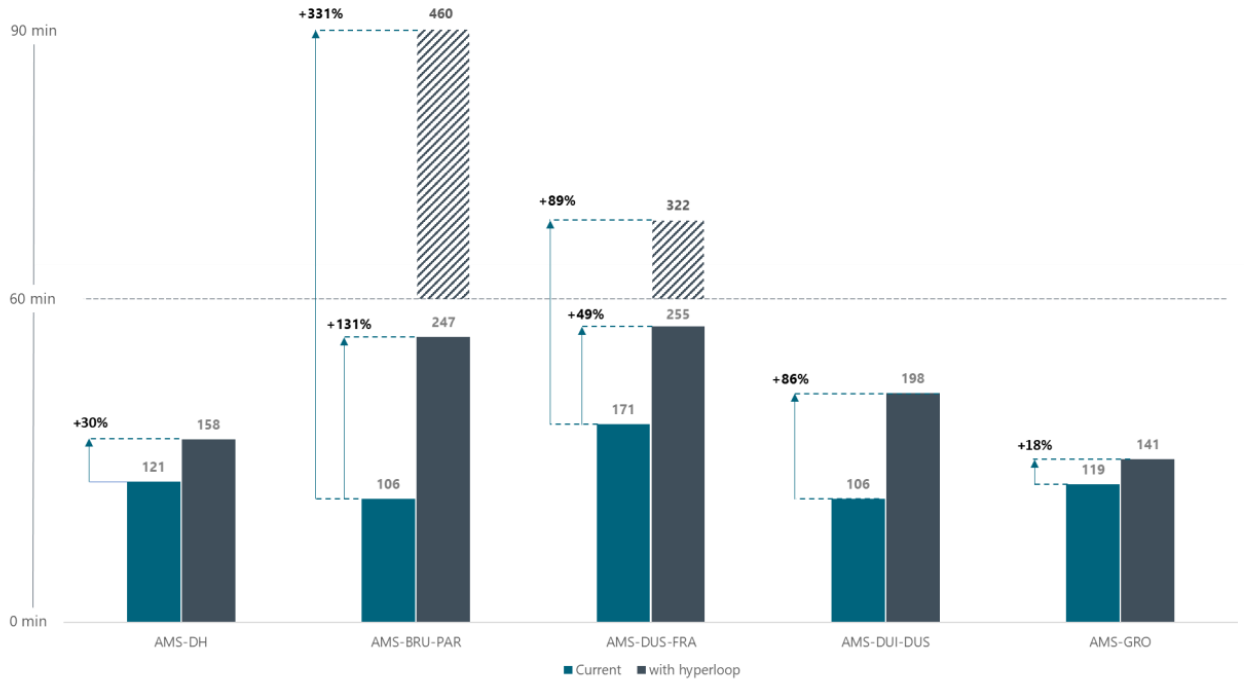
Substitution
- Substitution of Traditional Transport Modes: Hyperloop can replace up to 85% of trips from Amsterdam to Paris, 82% from Amsterdam to Frankfurt, and 71% from Amsterdam to Dusseldorf from aviation and high-speed rail based on travel time reduction.
- Aviation Substitution: The Hyperloop system could encourage substitution of aviation with market shares reaching up to 40% in the initial years and up to 85% after the new mode stabilizes on routes around 500 km length.
- Effective Substitution: Hyperloop is projected to substitute jointly short-haul flights and high-speed rail trips in the range of 70-85% on the four international routes studied.
- Potential Market Diversion: The theoretical modal choice model developed by Hardt suggests that the Hyperloop, operating at an average speed of 500 km/h, could divert 62% of passengers from the total transportation market, with an even higher substitution rate if operating at 700 km/h.
Decongestion
- Increased Transportation Capacity: The Hyperloop system's potential capacity significantly exceeds the peak-hour demand at major stations, accommodating all current passengers with additional capacity for more.
- Reduction of Aircraft Movements: The Hyperloop could substitute short-haul flights, thus reducing aircraft movements. For instance, routes such as Amsterdam-Brussels-Paris and Amsterdam-Dusseldorf-Frankfurt could see reductions of between 12,000 to 15,300 and 7,900 to 9,200 aircraft movements per year respectively.
- Decrease in Airport Congestion: By substituting short-haul flights, the hyperloop could alleviate congestion at Amsterdam Airport Schiphol. This would allow the airport to focus more on handling medium and long-distance flights, thereby better managing its resources.
- Enhanced Scheduling Flexibility: With its large capacity and high-speed operation, the Hyperloop system offers more flexible scheduling potential compared to traditional railway networks, which could help spread out demand more evenly over time and decrease peak congestion.
- Retention of Passenger Market: The hyperloop could retain 70-85% of the combined market of aviation and high-speed rail, suggesting a significant number of passengers would be willing to switch to this new mode of transport, helping to decongest both the rail and aviation networks.
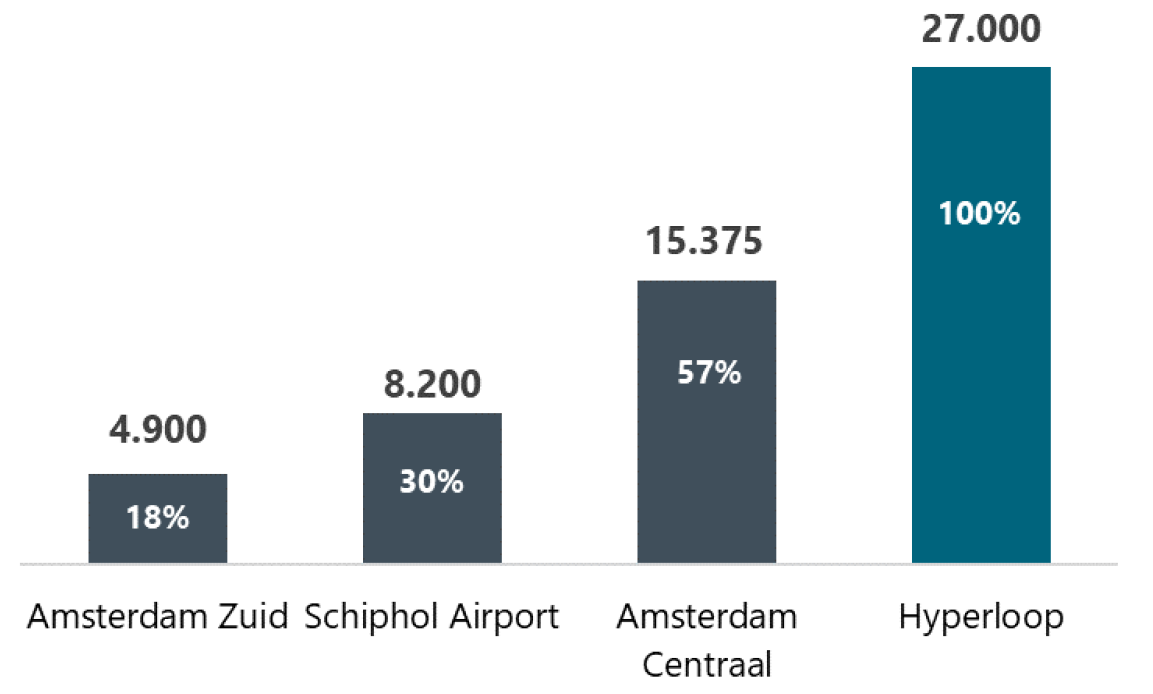
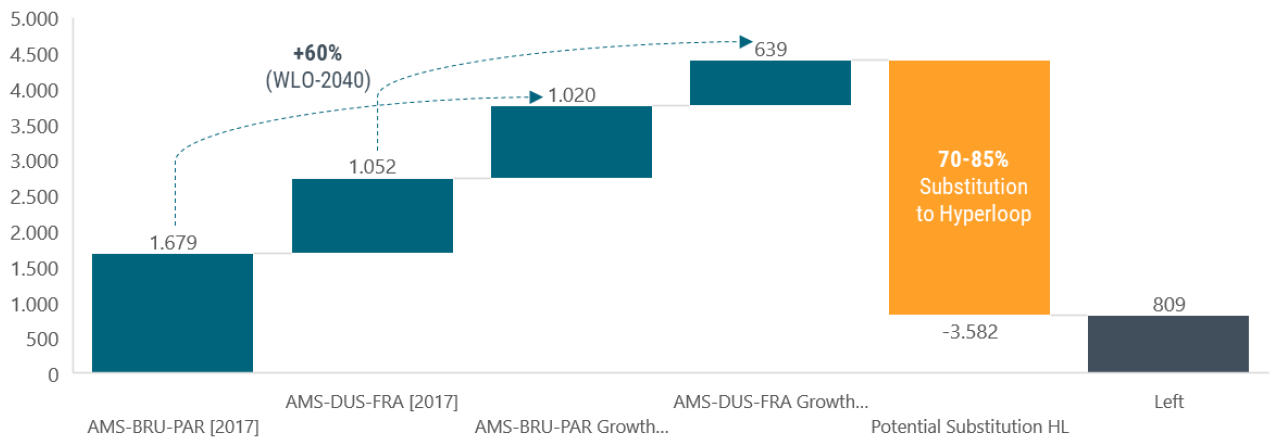
Economic Performance
The economic performance of hyperloop transportation in the "Compact Metropole" region is expected to be high, with the following benefits:
- Increased competitiveness: hyperloop transportation can improve the competitiveness of businesses in the region, resulting in benefits ranging from €0.5B to €1.2B, depending on the scope of the hyperloop network.
- Job creation: the implementation of hyperloop transportation can create up to 18,000 jobs in the region and throughout Europe.
- Reduction of external costs: hyperloop transportation can reduce negative external costs associated with road transport, such as accidents, air pollution, noise, congestion, and infrastructure costs.

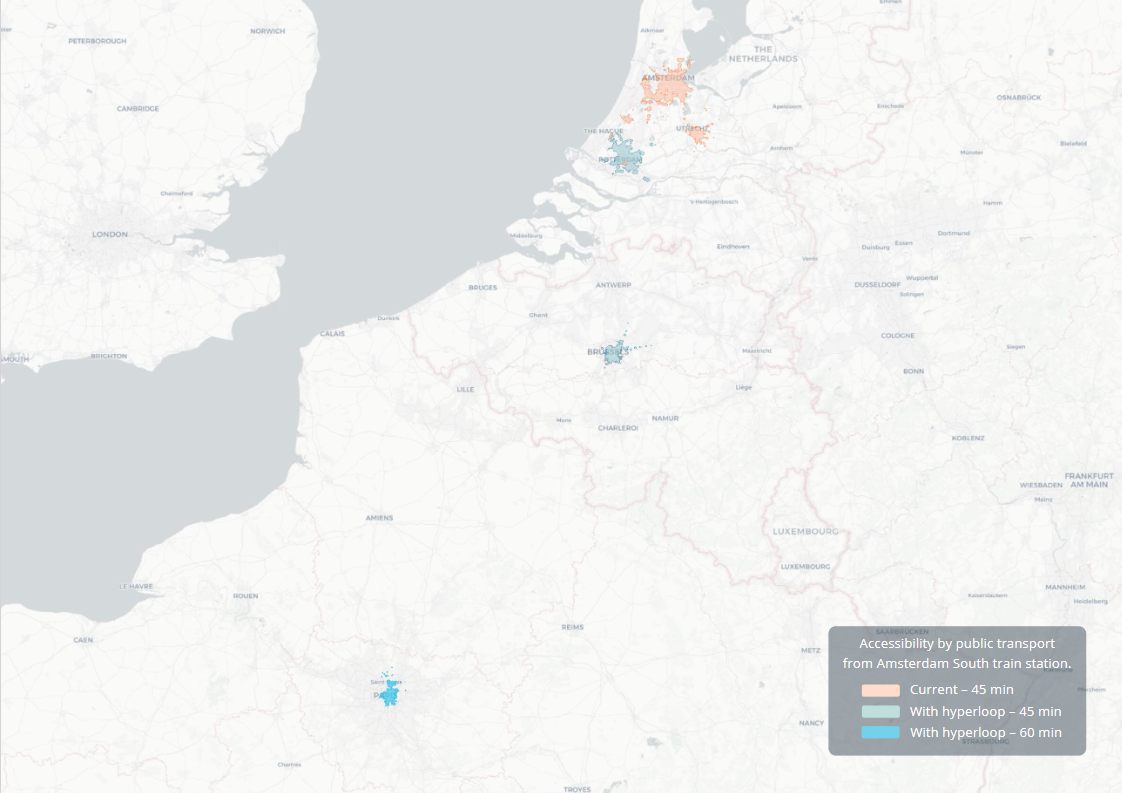

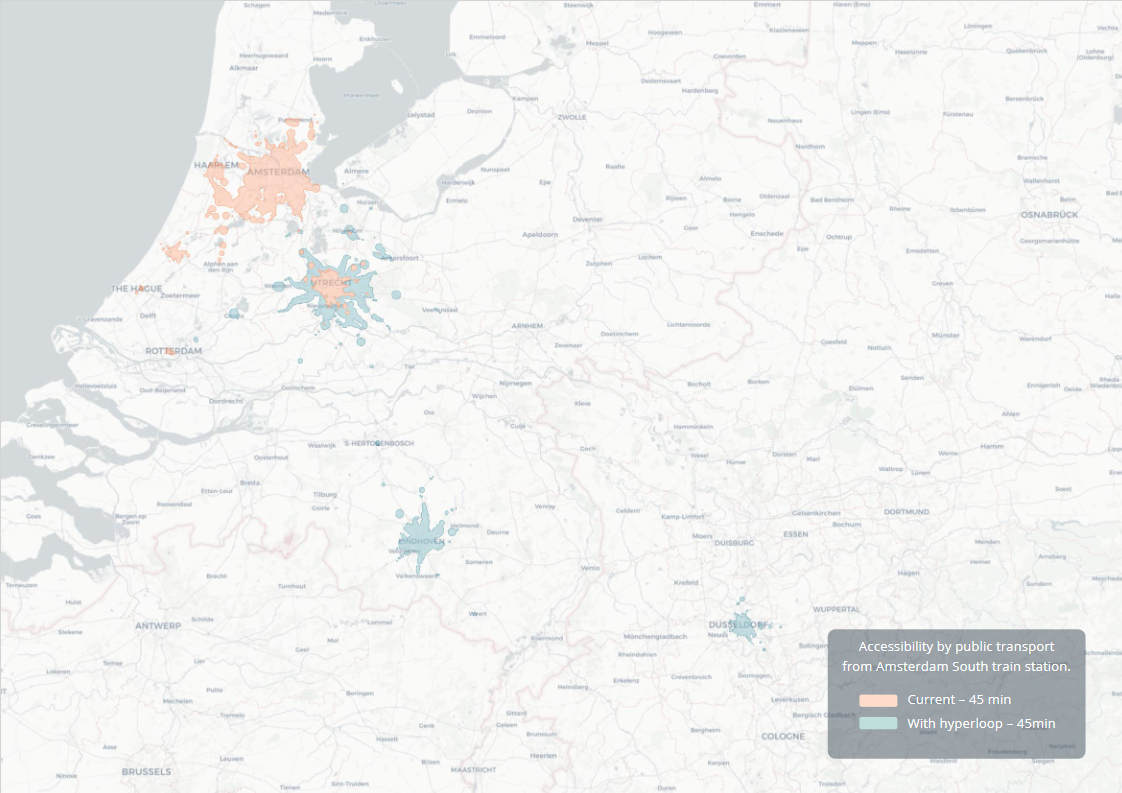
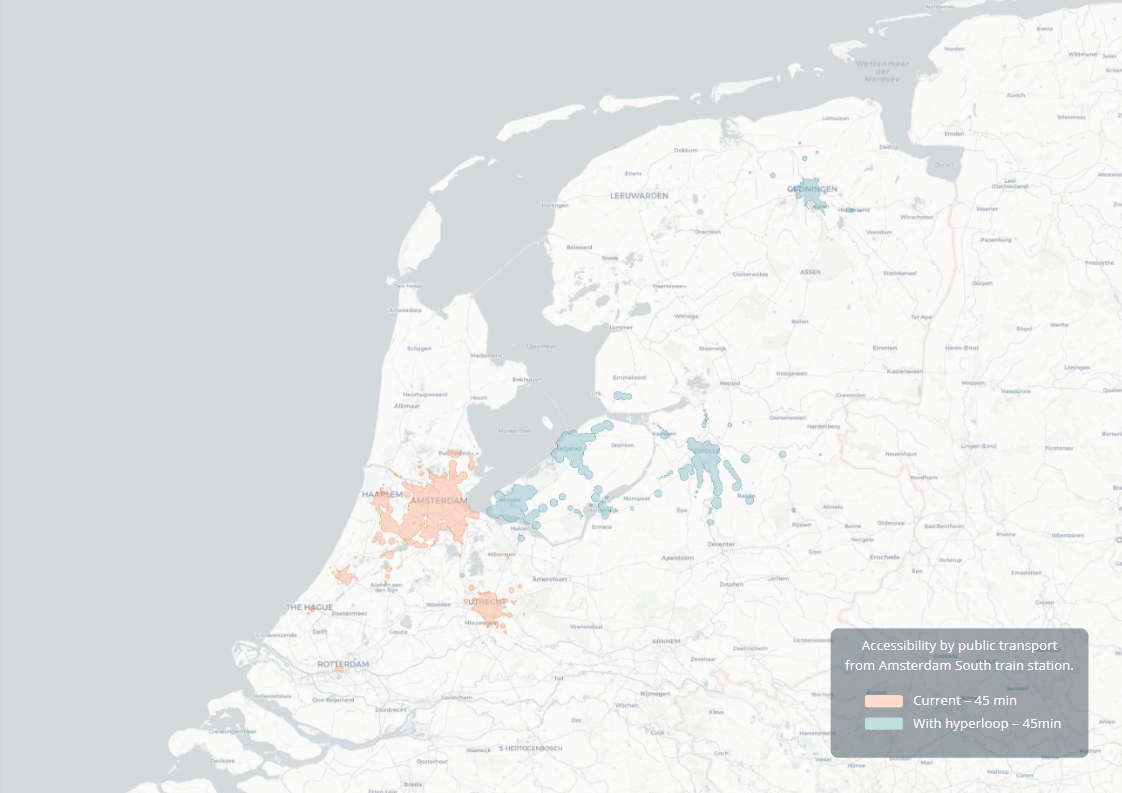
Project Realization
The implementation of hyperloop transportation in the Province of North-Holland can be realized through a general transport infrastructure development framework, with a decision-making process being iterated after each preparatory phase. The project realization plan involves the following steps:
- A concept study, to analyze the feasibility of hyperloop transportation in the "Compact Metropole" region.
- A pre-feasibility study to assess the impact of hyperloop transportation on the development perspective of the "Compact Metropole."
- A feasibility study, which is a detailed assessment of the project, including defining project partners and stakeholders to make the final decision about the project implementation.
- A design, engineering, and construction phase which will start the actual development of the hyperloop transportation system.
- An operationalization phase is expected to start in 2029 when the project becomes operational.
Acknowledgements


Hyperloop concept study with Province Noord-Holland
https://issuu.com/hardthyperloop/docs/report_hyperloop_noord-holland_-_hardt

